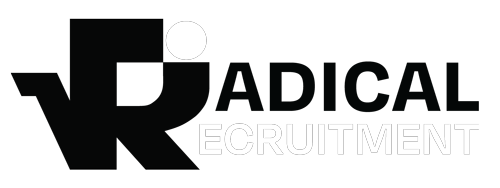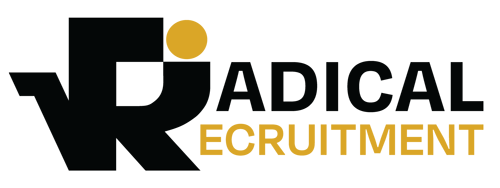From Stress to Strength: How One Centre Rebuilt Team Morale
A Leadership Success Story That Transformed Workplace Culture

When stress takes hold in the workplace, it does not just impact individuals. It spreads across teams, damages morale, and limits organisational performance. This case study reveals how one early childhood education and care (ECEC) centre faced serious challenges, then transformed into a high-performing workplace by committing to leadership development, culture renewal, and employee wellbeing.
The Challenge: A Workplace Under Pressure
The centre was experiencing a steep decline in team morale and engagement. Staff turnover had reached 35 percent annually, and employee satisfaction scores were the lowest on record. Productivity dropped by 20 percent, and absenteeism rose sharply. Customer satisfaction was also affected, with feedback indicating a drop in service consistency and care quality.
Team meetings became tense, communication broke down, and collaboration gave way to isolation. Instead of being energised by their work, educators and staff were showing signs of burnout and disengagement.
Identifying the Root Causes
To uncover the issues behind the performance decline, the leadership team launched a structured consultation process. Through employee surveys, informal conversations, and operational reviews, five key areas of concern were identified:
- Leadership Disconnection: Senior leaders were perceived as out of touch with daily operations, leading to misalignment between decisions and staff needs.
- Lack of Recognition: Team members reported feeling undervalued, with achievements overlooked and only mistakes highlighted.
- Ineffective Communication: Most communication was one-directional, leaving educators feeling unheard and uninformed.
- Limited Growth Opportunities: There were few pathways for professional development, and no clear career progression plans.
Unrealistic Workloads: Constant pressure, tight deadlines, and lack of support created an unsustainable work environment.
The Turnaround Strategy: A Five-Phase Transformation
The centre leadership responded with a multi-phase strategy focused on visibility, communication, development, recognition, and balance. Their approach was clear, consistent, and tailored to the needs of both the team and the service community.
Phase 1: Making Leadership Visible and Accountable
Leaders committed to being regularly present on the floor, observing challenges firsthand and listening to concerns directly from staff. Weekly informal catchups were introduced to gather real-time feedback and build trust. These actions signalled that leadership was not just listening but actively participating in problem-solving.
Phase 2: Creating Transparent Communication Channels
A new communication structure was introduced to keep everyone informed and engaged. This included:
- Weekly team huddles to share wins, address challenges, and clarify priorities.
- Monthly open forums for discussing goals, performance updates, and future plans.
- Dedicated digital platforms to enhance collaboration between rooms and departments.
These initiatives helped rebuild transparency and encouraged open dialogue across all levels of the centre.
Phase 3: Recognising and Celebrating Success
The centre introduced meaningful staff appreciation programs that helped boost morale and reinforce positive behaviours. These included:
- A formal recognition program that celebrated outstanding contributions each month
- Peer-nominated awards that acknowledged support, collaboration, and innovation
- Team celebrations for project milestones and positive parent feedback
Recognition became part of the centre’s culture, not just a quarterly event.
Phase 4: Reinvesting in Professional Development
The leadership team made professional growth a core focus by allocating budget and time for:
- Personalised development plans that aligned staff goals with centre objectives
- Regular in-house workshops and external training opportunities
- Leadership mentoring for emerging team leaders and senior educators
These initiatives signalled that career progression and upskilling were not just encouraged but expected.
Phase 5: Focusing on Work-Life Balance and Wellbeing
Wellbeing programs and new operational policies were introduced to support a more sustainable workplace culture:
- Flexible rostering and part-time options for eligible staff
- Mental health support resources and wellness check-ins
- Clear workload planning with realistic deadlines and adequate coverage
- Mandatory break periods to prevent burnout
These changes helped restore energy, focus, and a sense of care across the team.
The Results
After twelve months, the centre experienced a complete transformation in performance and culture. The improvements were not only measurable but also deeply felt by the team and community.
- Staff Retention: Annual turnover dropped from 35% to 12%.
- Engagement: Employee satisfaction scores improved by 45%.
- Productivity: Team efficiency increased by 28%, with fewer delays and errors
- Family Satisfaction: Parent feedback scores rose by 22%.
- Financial Growth: The centre exceeded enrolment and revenue targets by 15%.
Leadership Lessons That Drove the Change
The leadership team reflected on the most important lessons learned through this transformation:
- Presence Builds Trust: When leaders make themselves visible, listen with empathy, and follow through on feedback, trust is built quickly and effectively.
- Recognition is Not Optional: Small gestures of appreciation can have a large impact. Celebrating wins, both big and small, helped reignite a sense of pride across the team.
- Communication Must Go Both Ways: Honest, two-way conversations created psychological safety and helped uncover challenges early before they escalated.
- Development Drives Loyalty: Staff who feel their growth is supported are more likely to stay and contribute long-term. Investing in development reduced attrition and improved performance.
- Workplace Culture is Built Daily: Culture is not created in meetings; it is shaped by what happens on the ground, every day. From team rituals to supportive feedback, consistent actions sustained long-term change.
Keeping the Momentum Going
The centre implemented quarterly team culture reviews, continuous feedback loops, and annual strategic planning sessions to maintain alignment and progress. Leadership continues to participate in professional development, and employee voices remain central to decision-making.
A Model for Other Organisations
This case study offers valuable insights for other ECEC centres and service-based organisations looking to rebuild morale, reduce staff turnover, and create a culture of excellence.
The most successful initiatives shared three qualities:
- They were intentional and tailored to the unique needs of the team
- They were consistent and sustainable over time
- They placed people at the centre of every decision
Ready to Transform Your Team?
If your organisation is feeling the weight of disengagement or staff burnout, take inspiration from this transformation journey. With the right leadership, strategic focus, and a genuine commitment to people, any workplace can move from stress to strength.
To explore how Radical Recruitment’s leadership and team development programs can help your service build a thriving, values-aligned team, reach out today.
Make morale your competitive advantage.

